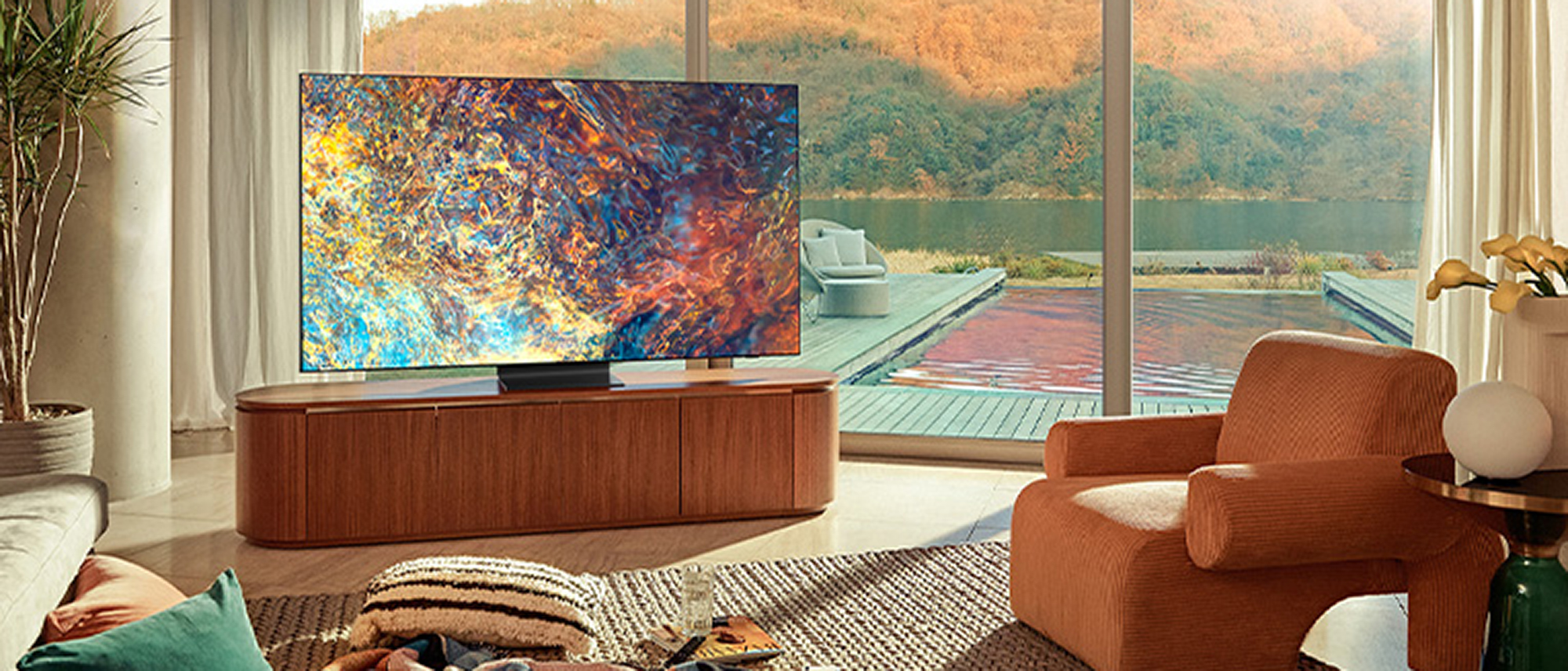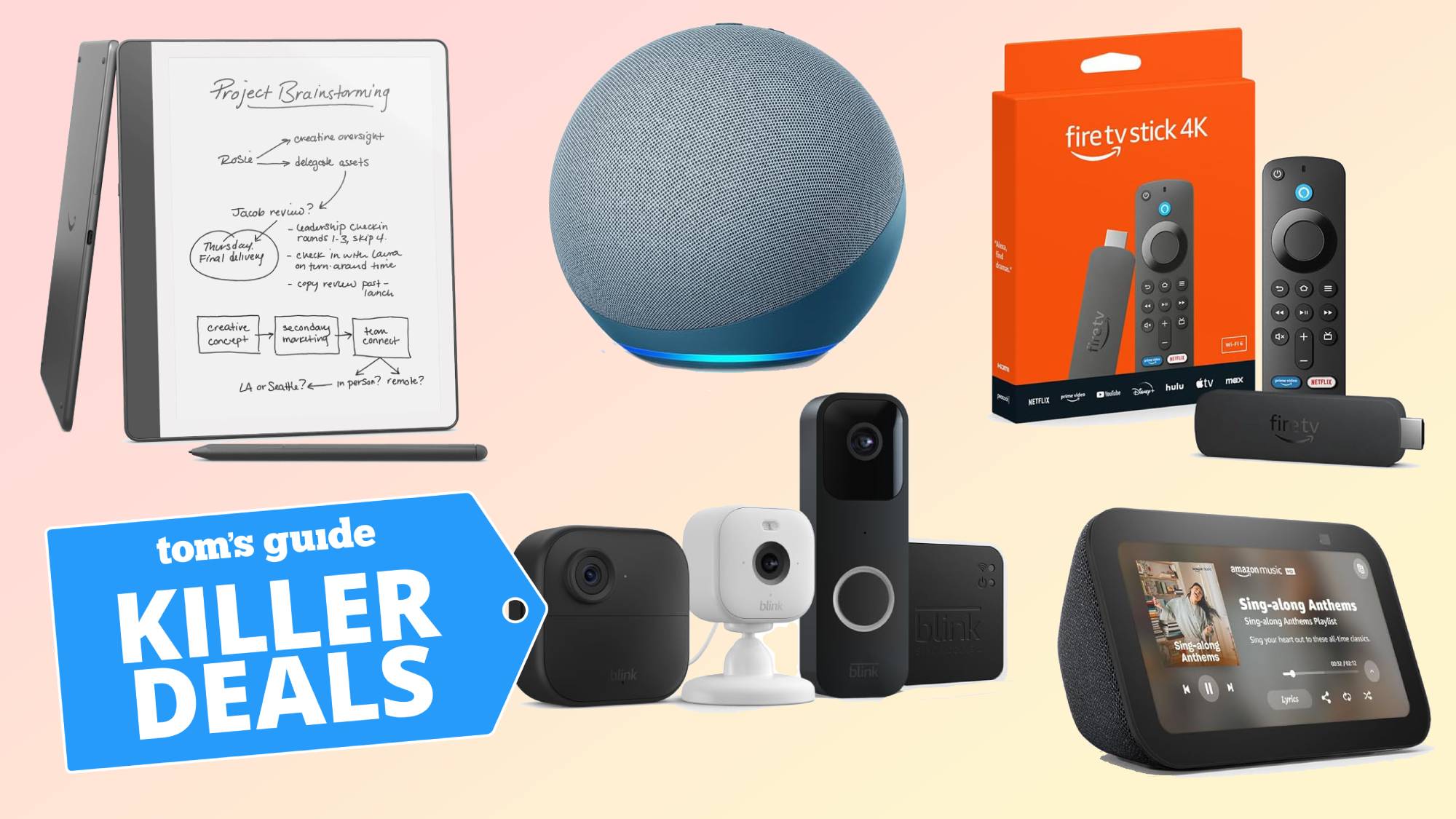Tom's Guide Verdict
It's over a year old now, but the Samsung QN90A Neo QLED TV’s mini-LED backlighting makes for unmatched picture brightness, while a bounty of smart features and a new eco-friendly remote complete the premium experience.
Pros
- +
Beautiful, thin design
- +
Neo QLED delivers incredible brightness
- +
Impressive anti-glare abilities
- +
New rechargeable remote
Cons
- -
Visible blooming at times
- -
Just one HDMI 2.1 port
- -
No Dolby Vision support
Why you can trust Tom's Guide
Price: $2,599
Model number: QN65QN90AAFXZA
Screen size: 65 inches
Resolution: 3,840 x 2,160
HDR: HDR10, HDR10+, HLG
Refresh rate: 120 Hz
Ports: 4 HDMI (1 HDMI 2.1), 2 USB
Audio: 60W, 4.2.2 channel sound
Smart TV software: Tizen
Size: 56.9 x 32.6 x 1 inches (w/o stand)
Weight: 53.8 pounds (w/o stand)
Although it will soon be surpassed by a newer model, the Samsung QN90A Neo QLED TV is still one of the best TVs you can buy right now, period. It’s impossibly bright, stunningly thin, packed with clever “smart” features and as reliable as the company’s sets have ever been.
With a proprietary mini-LED panel called Neo QLED, the QN90A promises superior performance to both its established OLED competitors and the evermore convincing mid-range QLED makers. And even though the QN90A Neo QLED is the most premium of all the 4K 2021 Samsung TVs, it’s actually less expensive than its standout Q90T predecessor.
It’s not perfect. The brightness boost undermines other picture elements at times, plus Samsung still won’t give more than one HDMI 2.1 port — a feature we're desperately hoping Samsung fixes with the upcoming QN90B model — but this Samsung QN90A Neo QLED TV review crowns a new champion for Quantum Dot display technology.
And I reckon the Samsung Neo QLED is the reason why 2021 was the year QLED finally beat OLED.
Samsung QN90A Neo QLED TV: Price and configurations
The QN90A Neo QLED TV was Samsung’s top-shelf 4K LCD TV for 2021 — at least over here in America. The UK and Europe had a step-up model in the form of the Samsung QN95A, though both territories will soon have access to the QN95B QLED TV for the first time, the new top-tier 2022 model.
In terms of price, the Samsung QN90A Neo QLED TV is a bit more affordable than Samsung's 2020 flagship, the Q90T QLED, coming in at $100-$300 less, depending on the size. The 65-inch configuration we tested costs $2599, while the 55-inch model costs $1799 and larger 75-inch size costs $3499. It’s also one of the best 85-inch TVs you can buy, offering a big-screen option for $4999. Make sure you check our Samsung promo codes to see if you can lower the cost.
- 55-inch QN55QN90AAFXZA: $1,799.99
- 65-inch QN65QN90AAFXZA: $2,599.99
- 75-inch QN75QN90AAFXZA: $3,499.99
- 85-inch QN85QN90AAFXZA: $4,999.99
Be sure to see our ‘What size TV should you buy?’ guide for help deciding which version is right for you. You should expect to see similar performance compared to our 65-inch test model across the size options. All four models offer Neo Quantum Processor 4K, the latest Tizen smart features, voice assistant controls and Object Tracking Sound Plus. Our recommendations should apply to every screen size of the QN90A Neo QLED model.
While you can find last year’s Q90T QLED on sale right now with some of the best cheap TV deals, the QN90A Neo QLED will only see minor discounts before the holiday season, keeping it firmly in the premium price range.
Samsung QN90A Neo QLED TV review: Design
When it comes to modern TV aesthetics, the QN90A is the crème de la crème. Though setting up 65-inch TVs is a two-person job, this set is easier to maneuver than others. Gone are the days of Samsung’s One Connect input box, the company managed to pack all the set’s parts in a super-slim, 1-inch-thin build with no protruding pieces to distract from the effect.
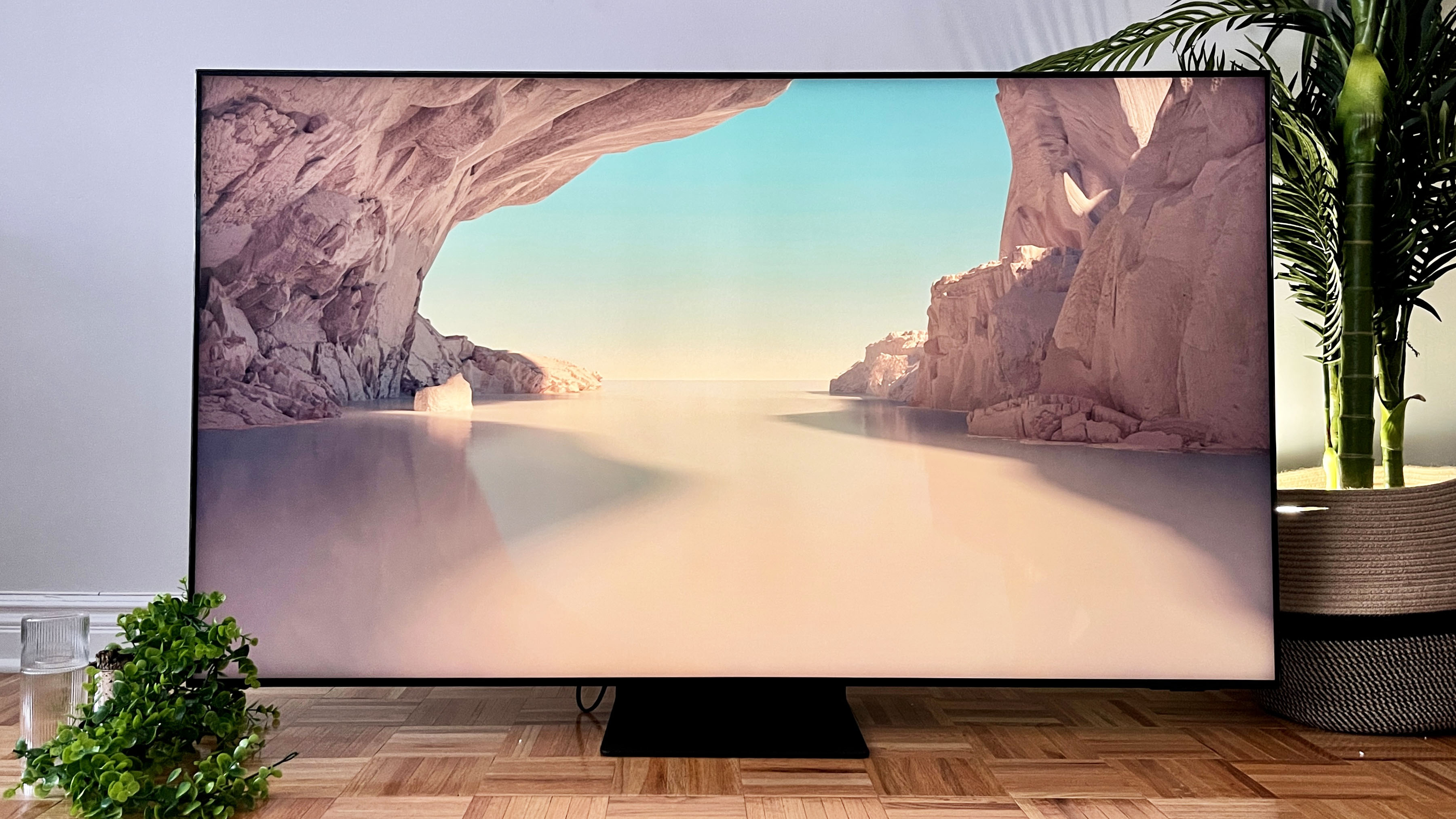
The Samsung QN90A Neo QLED TV’s bezels are practically invisible, blurring the border between the panel and chassis. I thought my current Samsung Q80T QLED TV was a good-looking piece of tech, but the QN90A seriously elevated my standards.
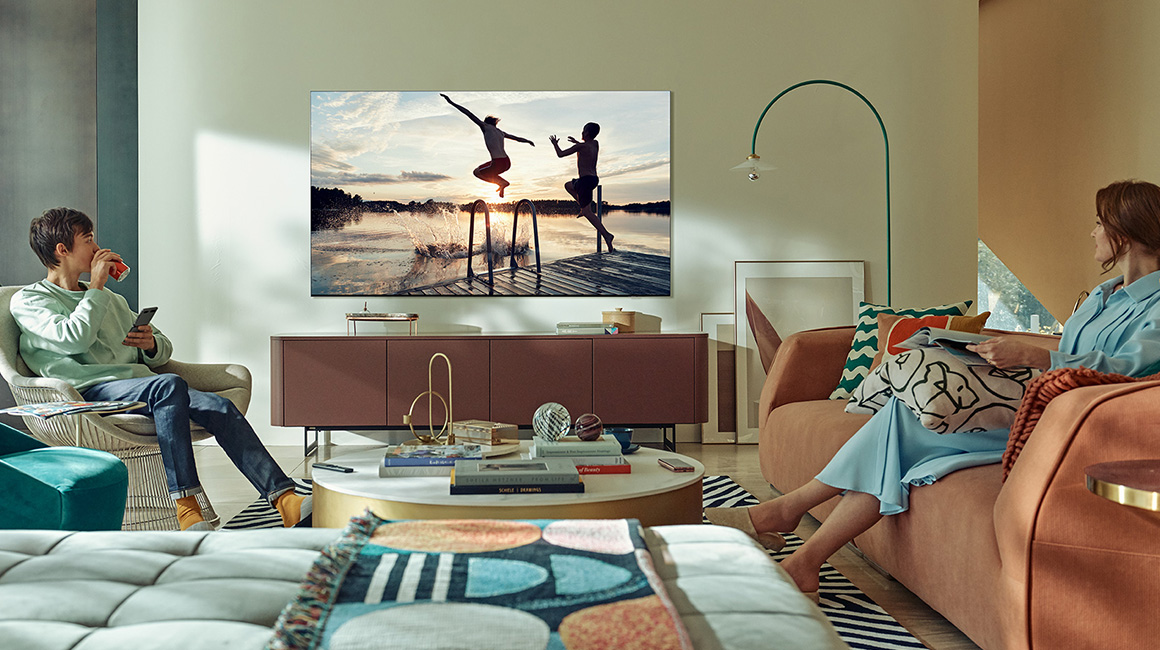
And that’s without wall-mounting the QN90A, as Samsung suggests. Since I only tested the set temporarily, I opted for the central stand, which didn’t instill as much confidence as I’d like. I sensed a clumsy bump could lead to this TV’s demise, which is why I’d avoid using it, if possible. Go for Samsung’s own no-gap wall mount for the ultimate flush-mount look, although a 400 x 300 millimeter VESA wall mount would also work for the 65-inch model. (Check out the best TV mounts for plenty of great options.)
Samsung QN90A Neo QLED TV review: Ports
Like the rest of the 4K QLED lineup, the Samsung QN90A Neo QLED TV has two USB 2.0 ports and four HDMI ports. But just one of those four ports offers HDMI 2.1, which supports peripherals features like eARC, Auto Low Latency Mode and Variable Refresh Rate. These settings take advantage of the next-gen graphic abilities of the PS5 and Xbox Series X.
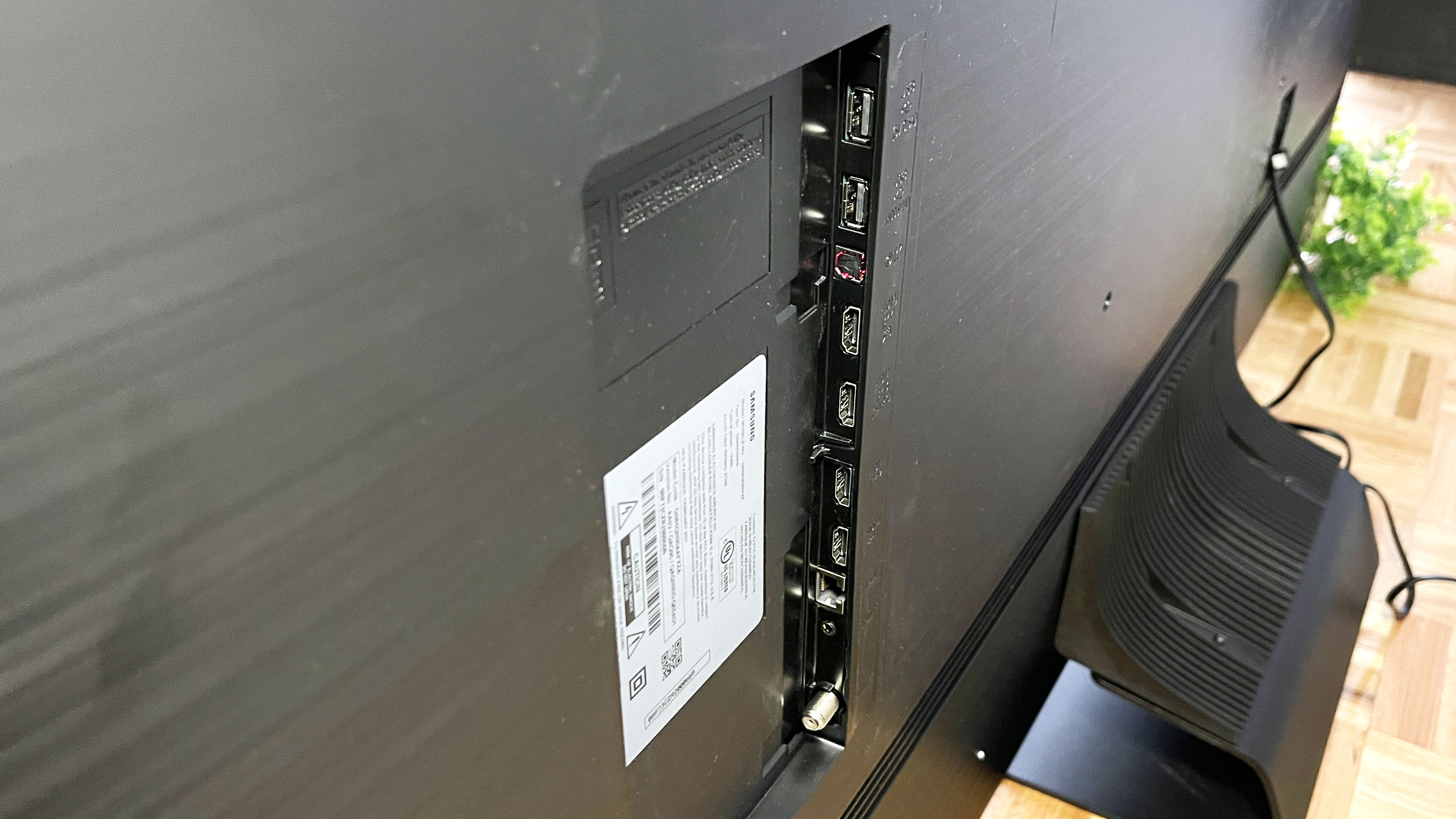
LG’s OLED TVs are all outfitted with multiple HDMI 2.1 inputs, which makes Samsung’s QLEDs only having the one seem limiting. For example, you can’t have your new console and your eARC-capable soundbar leveraging their top abilities simultaneously, which could grow bothersome over time.
Beyond traditional ports, the Samsung QN90A Neo QLED TV sports built-in NextGen TV ATSC 3.0 tuners. In locations where the emerging broadcasting technology is available, ATSC 3.0 can support 4K picture over-the-air as well as a return channel that allows for interactivity and targeted advertising.
Samsung QN90A Neo QLED TV review: Performance
Let’s talk about Neo QLED. The QN90A picture is powered by an array of tiny light cells using mini-LED lights, promising dramatic improvements in contrast and backlight control. The mini-LEDs work with the Neo Quantum Processor 4K to deliver a 4K-optimized picture.
Watching the "All-New Halloween Spooktacular” episode of WandaVision on Disney Plus, the set could show off how it handles motion and high-contrast scenes. As Wanda extends the reach of her Hex, the S.W.O.R.D. camp is turned into a traveling circus. Even as the agents try to escape the growing boundary, you can see their uniforms and equipment transform seamlessly (and hilariously) into clown garb and colorful tents. Except when a curious Vision reaches the Hex’s boundary, glowing in dark fields, there seems to be a bit of blooming, as well as occasional vignetting in the corners.
The HDR capabilities of the QN90A are excellent, but it does highlight one quirk of Samsung TVs. While the high-dynamic range performance ixxs great, the HDR formats are a bit limited. Samsung doesn't support the best HDR format, Dolby Vision, using it's proprietary HDR10+ format instead.
These are signs of uneven backlight issues, perhaps at the expense of Neo QLED’s brightness boost, but the average viewer probably won’t notice it much. Or at least won’t care when you see just how bright this set can get. Even in a room flooded with sunlight, the Samsung QN90A’s picture held up much clearer than LG G1 and Samsung Q80T in side-by-side testing. The anti-reflection abilities are pretty impressive, handling the shadowy and ominous Golden Armor fight scene in Wonder Woman 1984 well.
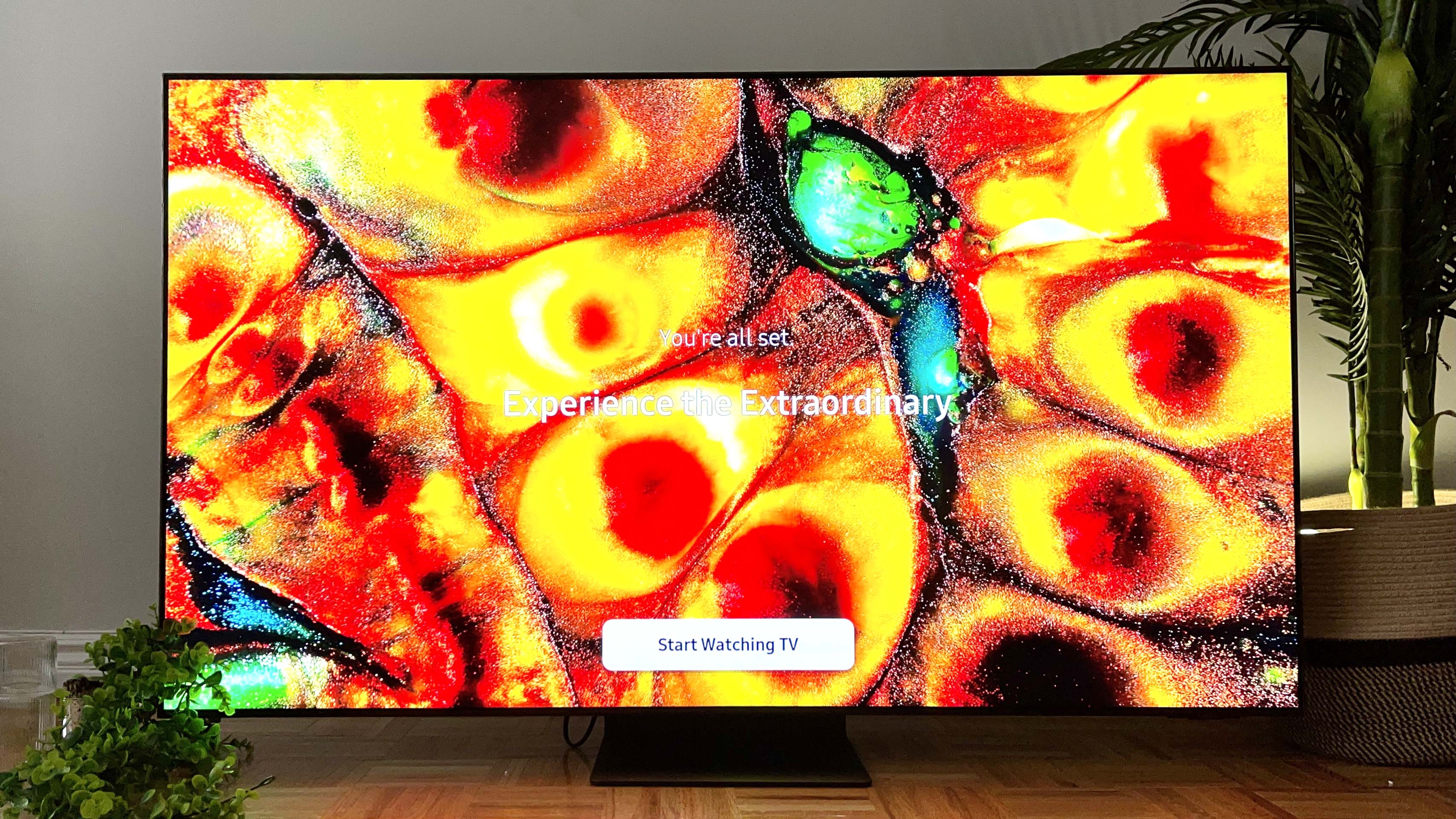
As Diana fought Cheetah, Wonder Woman’s gilded wings looked majestic and regal, yet not-out-of-place in the dark, foggy setting. The set could’ve identified the armor as the focus point of the scene and enhanced it to a cartoonish effect, but it produced a balanced picture, likely as the filmmaker intended. Again, this is a testament to Neo QLED’s brightness, since I made these observations in a naturally-lit room. When I tried the scene in darkness, not only did it look fantastic, but I realized I wouldn’t need the lamps in my living room in the evening — the set literally lit up my apartment.
Samsung QN90A Neo QLED TV review: Test results
Our proprietary Tom’s Guide TV testing told me more about the Samsung QN90A Neo QLED TV beyond my anecdotal viewing experience. LCD/LED TVs have always beat out OLED on brightness, but the QN90A blows away anything we’ve ever seen. It reached a max brightness of 1813.83 nits. The LG G1 OLED TV reached a max brightness of just 412.05 nits, for comparison. And it’s not just OLED sets the QN90A triumphs — the Quantum-powered Vizio P-Series (P65Q9-H1) and TCL 6-Series R635 maxed out at 471.20 nits and 583.1 nits, respectively.
We measure TV accuracy with a Delta-E rating. A smaller score is ideal (0 is perfect), and the Samsung QN90A earned a 2.6, offering an improvement over the Q80T’s score of 3.9. It’s also close to the Vizio P-Series and TCL 6-Series R635, which both scored 2.2. LG’s OLED panels still have a clear edge in accuray, with the LG G1 earning a 1.6 and last year’s Sony A8H Bravia OLED TV earning a 1.5.
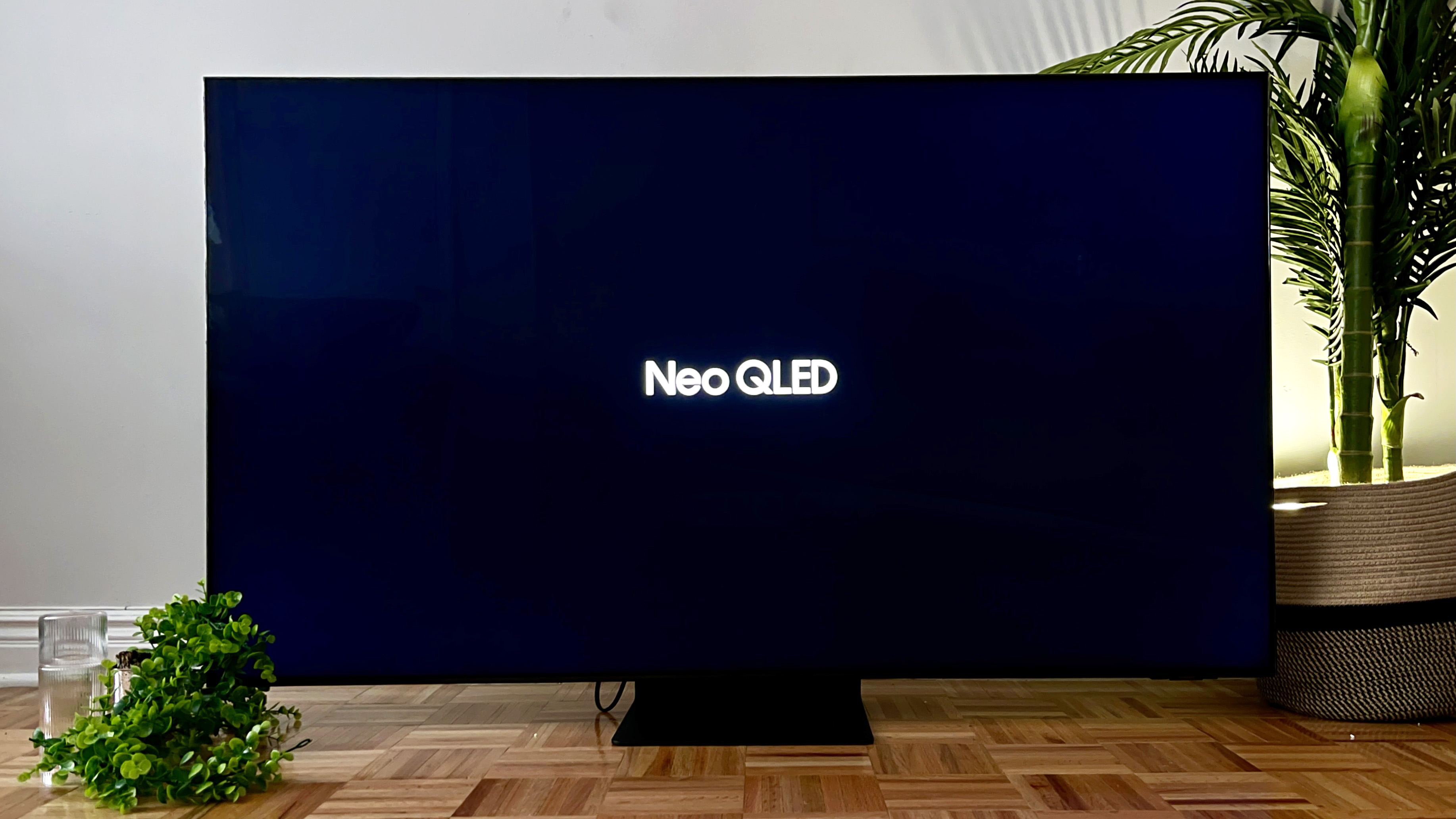
When it comes to color reproduction, which we measure using a X-Rite i1 Pro spectrophotometer and SpectraCal CalMAN Ultimate calibration software. The Samsung QN90A Neo QLED was able to reproduce 99.51% of the Rec 709 color space. Anything approaching 100% is good for a non-OLED TV, and this QLED scored in the range of others like the Vizio P-Series (99.90%) and TCL 6-Series (99.92%).
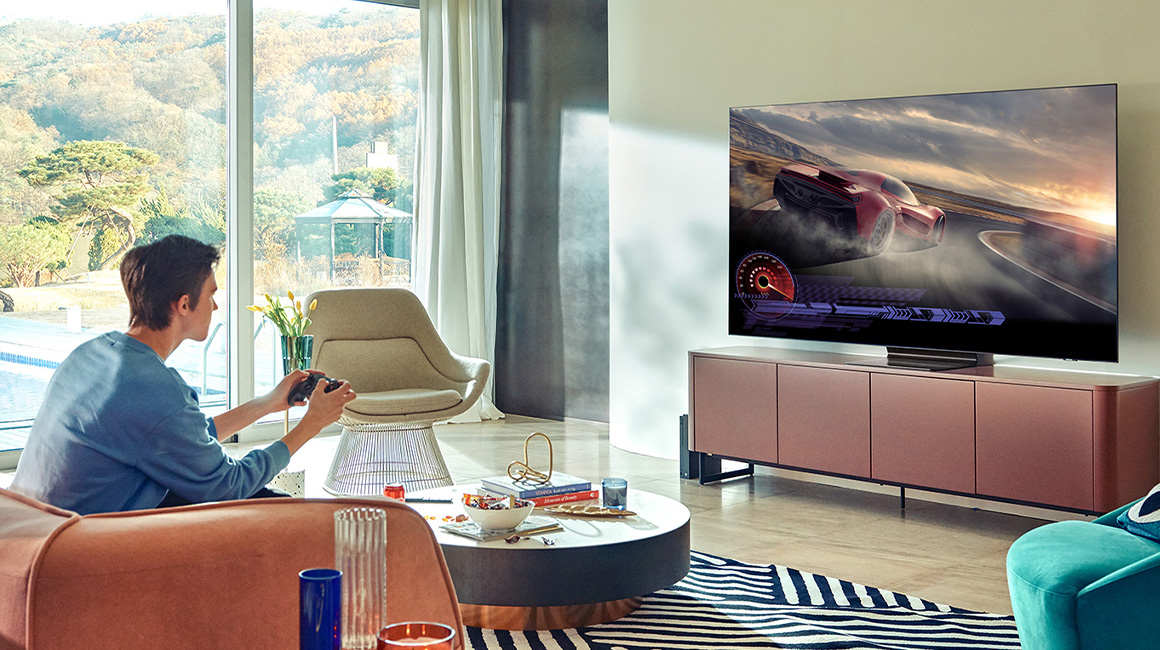
Gamers will be glad to know the Samsung QN90A has one of the best lag times you’ll find. Our review unit measured lag time of 12.6 milliseconds with its auto low latency mode — a huge improvement over the Q80T’s 30.1 milliseconds. Usually we recommend sets with sets with a lag time below 20 milliseconds for the best gaming TVs, and the addition of gaming-focused features make the QN90A Neo QLED an excellent choice for gamers.
Samsung QN90A Neo QLED TV review: Audio
The Samsung QN90A Neo QLED TV has 60W speakers, which, when paired with Samsung’s Object Tracking Sound (OTS) Plus technology, makes for a loud and immersive listening. OTS is supposed to tailor the set’s audio to match the content on screen using built-in upward and downward-firing speakers.
Watching Wonder Woman 1984, the whipping of Diana’s Lasso of Truth followed its movement with precision. Then, as bullets ricochet off Wonder Woman’s armor as she attempts to stop Maxwell Lord in the White House, it actually sounds as though the shells fell to the floor around my own feet.
OTS nearly makes up for the set’s lack of native Dolby Atmos. That said, it will output Atmos-formatted content for a Dolby Atmos speaker. I’m usually inclined to use an external speaker anyway, so check our list of the best soundbars for recommendations.
Beyond OTS, Samsung said you should experience sound tailored to your environment, no matter where your TV is placed. AI should also enhance the on-screen voices when the set senses loud environmental sounds.
Samsung QN90A Neo QLED TV review: Smart TV features
Samsung's Tizen smart TV software looks more or less the same this year, and I’d say that’s a good thing. The software is reliable, offering a broad selection of apps. From the Loki TV series on Disney Plus to any of the best HBO Max shows and movies, you’ll find most of the apps and content you enjoy. Tizen even has a special Apple TV app for enjoying iTunes movies and shows, as well as Apple's original Apple TV Plus shows and Apple Fitness Plus – no separate Apple TV 4K (2021) box needed.
The home screen’s bottom-bar layout is clean and unobtrusive. You can customize the row of apps to include all your favorite services, and continue to watch a show while browsing. I much prefer this to LG’s recent webOS redesign, which pulled me away from what I was watching to find something else.
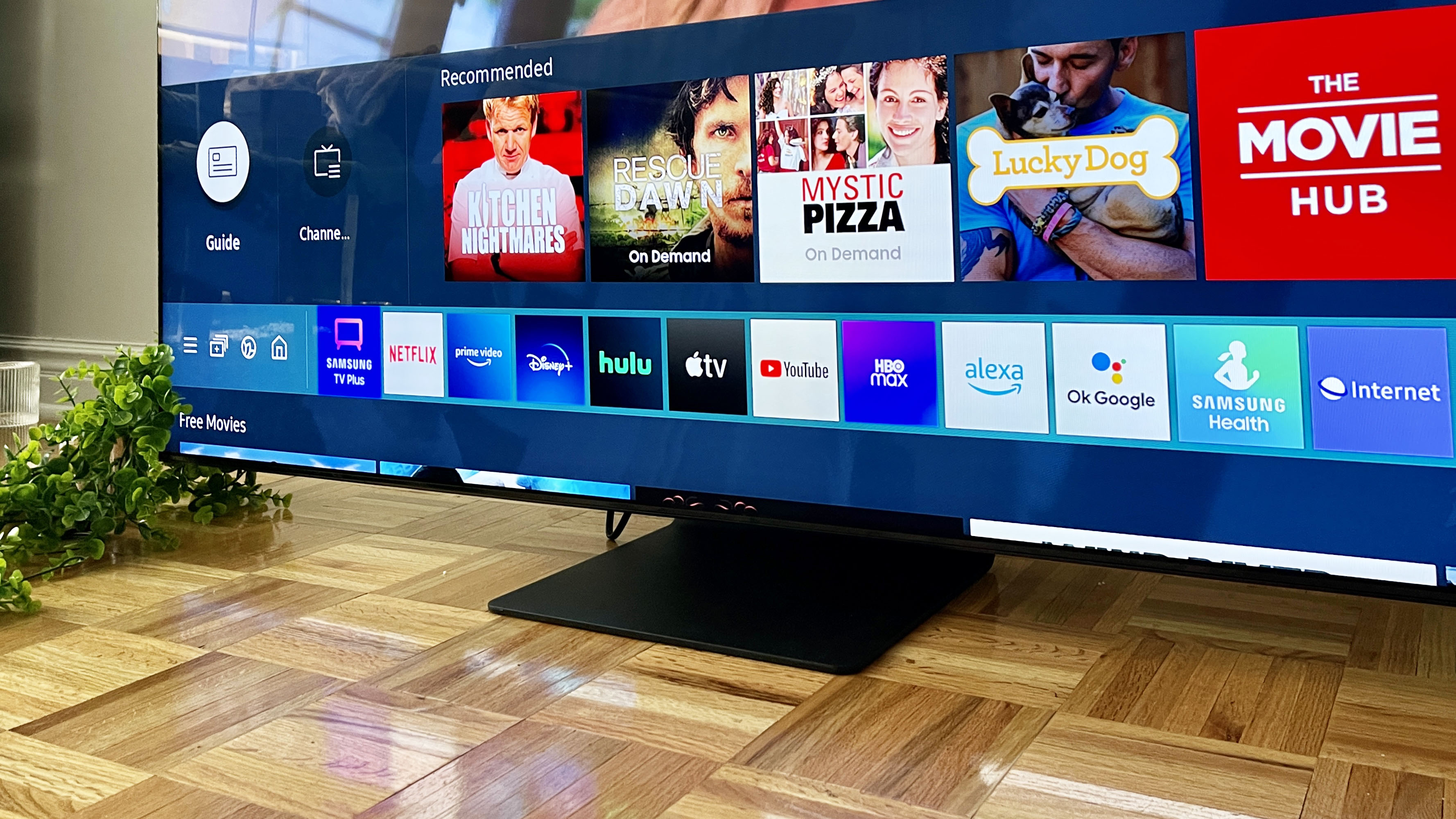
When you’re not watching TV, you can initiate a screensaver-style, low-power Ambient mode that displays all sorts of artwork, personal photographs or weather updates. The effect is more impressive on Samsung’s The Frame lifestyle TV, but Ambient mode is still a good alternative to the QN90As basic black “off” screen. Especially when this TV is wall-mounted.
Multi View is another notable screen mode. New this year, you can watch what's on your TV and your phone (depending on the model) on the same screen in picture-in-picture or side-by-side orientations. I prefer to watch one thing at once, but in cases where I need a videogame walkthrough or want to keep an eye on a sports game, this multitasking feature could come in handy. It also feels like a tease of the multi-input viewing of Samsung’s massive MicroLED TVs.
Samsung QN90A Neo QLED TV review: Smart home features
As a Samsung TV, the QNA90A Neo QLED TV meshes with your Samsung SmartThings smart home system. One of the best smart home hubs, SmartThings provides a control dashboard for all of the best smart home devices that are compatible with Samsung’s platform. From the Ecobee (5th gen) smart thermostat to Samsung’s own Family Hub refrigerators, you’re able to use your TV to drop-in or adjust settings quickly.
If you’re not immersed in Samsung’s smart home network, you can set up Alexa or Google Assistant (but not both at once) for voice commands on your TV. Using the remote’s microphone, you can ask either voice assistant basic queries or to control any of the best Alexa compatible devices or best Google Home compatible devices.
Samsung also partnered with Logitech to make the Samsung QN90A Neo QLED TV compatible with webcams. With any of the best webcams, you can use your set to video chat with up to 12 other people via Google Duo. This could be useful for those still working from home or trying to stay in touch with relatives, but I think most people are sick of video calls these days.
Samsung QN90A Neo QLED TV review: Remote
Samsung's Neo QLED TVs come with an all-new Samsung Solar Cell Remote, which replaces the usual AAA batteries for a rechargeable battery pack. The remote also features a small solar panel that helps maintain the remote’s battery using the ambient light in your space. For more on the environmental benefits, check out why we think the smartest TV tech of the year is Samsung's solar remote.
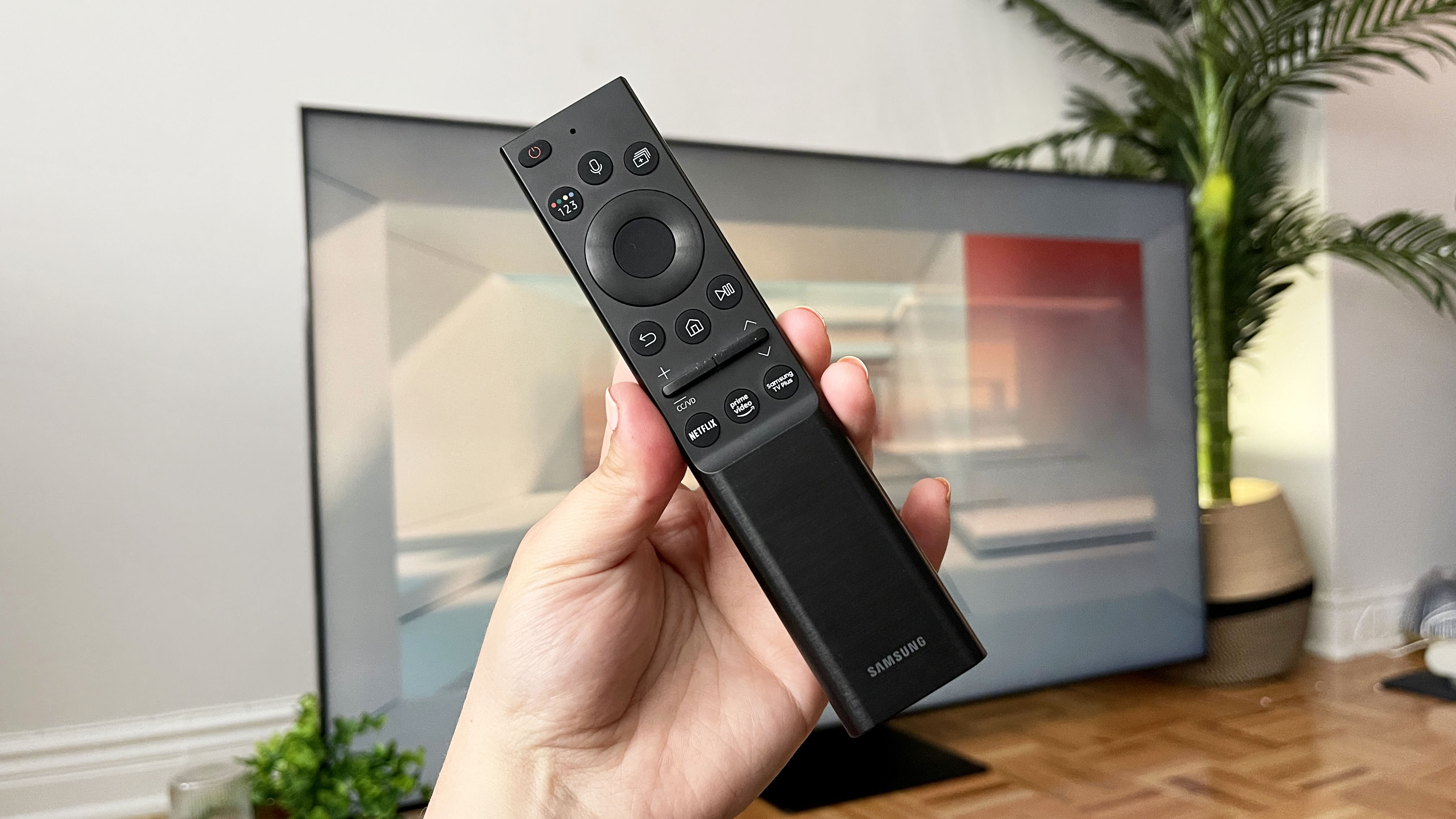
Even with its new tricks, the Solar Cell Remote feels lightweight and comfortable to hold. Its design is more uniform than the curved-yet-slender remote Samsung has used in the past, making it a little less prone to slipping between couch cushions. It’s still minimalistic in terms of buttons, but it has most of the controls you’ll need, including a microphone trigger, as well as dedicated launch buttons for Netflix, Prime Video and Samsung TV Plus.
Samsung QN90A Neo QLED TV review: Verdict
Just when Samsung found its stride with QLED, keeping up the capabilities of its OLED competitors, it innovated the heart of its product with an all-new panel — a panel that actually showcased improvements in our testing. It also reminded QLED alternatives it’s still the company to beat.
When it comes to the landscape of next-gen TVs, Neo QLED takes greater strides than OLED evo, committing to across-the-board improvements in a more affordable package. The familiarity of Tizen and environmental benefits of the Solar Cell Remote also help. Yes, I wish it had more than one HDMI 2.1 port, but that’s far from a deal-breaker. The Samsung QN90A Neo QLED TV is the best LCD TV on the market right now... at least until the Samsung QN90B Neo QLED TV arrives in 2022.
Kate Kozuch is the managing editor of social and video at Tom’s Guide. She writes about smartwatches, TVs, audio devices, and some cooking appliances, too. Kate appears on Fox News to talk tech trends and runs the Tom's Guide TikTok account, which you should be following if you don't already. When she’s not filming tech videos, you can find her taking up a new sport, mastering the NYT Crossword or channeling her inner celebrity chef.
